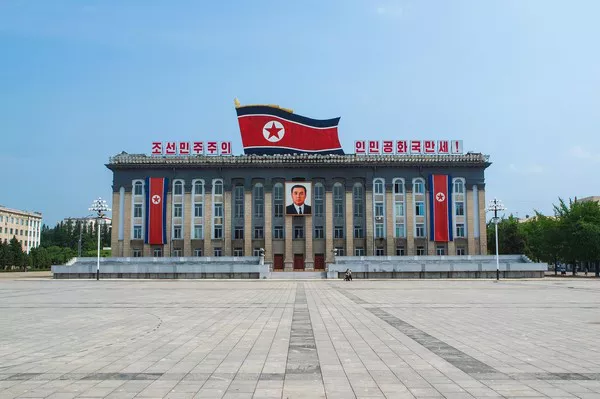While Asia boasts some of the most populous and economically influential countries in the world, it also encompasses nations that garner comparatively less attention on the global stage. These countries, often overshadowed by their more prominent neighbors, have unique cultures, histories, and geopolitical challenges. In this article, we delve into an in-depth analysis to identify and examine the ten least popular countries in Asia, shedding light on their circumstances and potential for growth.
10 Least Popular Countries in Asia
1. North Korea
North Korea, officially known as the Democratic People’s Republic of Korea (DPRK), stands out as one of the least popular and most isolated countries in Asia. Under the leadership of the Kim dynasty, North Korea has pursued a policy of self-reliance and strict control over its society. The country’s closed-off nature, coupled with its nuclear ambitions and human rights abuses, has led to widespread international condemnation and isolation. Despite efforts to engage with the international community, North Korea remains a pariah state, with limited diplomatic relations and economic opportunities.
2. Turkmenistan
Situated in Central Asia, Turkmenistan is known for its vast natural gas reserves and authoritarian government. The country’s closed-off political system, lack of media freedom, and human rights abuses have contributed to its low international profile. Turkmenistan’s economy relies heavily on energy exports, leaving it vulnerable to fluctuations in global energy markets. While efforts have been made to attract foreign investment and diversify the economy, Turkmenistan continues to struggle with economic stagnation and widespread poverty.
3. Bhutan
Nestled in the Eastern Himalayas, Bhutan is renowned for its stunning landscapes, Gross National Happiness index, and unique approach to governance. Despite its picturesque scenery and cultural heritage, Bhutan remains one of the least visited countries in Asia. The country’s remote location, limited infrastructure, and strict visa requirements contribute to its low tourist numbers. However, Bhutan’s commitment to environmental conservation and sustainable development has earned it admiration from the international community.
4. Tajikistan
Tajikistan, a landlocked country in Central Asia, faces numerous challenges, including political instability, economic hardship, and security threats. The country’s mountainous terrain and rugged landscape make infrastructure development difficult, limiting its connectivity with the outside world. Tajikistan’s economy relies heavily on remittances from migrant workers and revenues from hydropower exports. However, corruption, government mismanagement, and the presence of extremist groups pose significant obstacles to the country’s development and stability.
5. Myanmar
Formerly known as Burma, Myanmar has faced decades of military rule, ethnic conflict, and international isolation. While the country’s transition to civilian rule in recent years has brought hope for democratic reform, challenges remain. Ethnic tensions, human rights abuses, and the Rohingya crisis have tarnished Myanmar’s reputation on the global stage. Despite its rich cultural heritage and natural beauty, Myanmar continues to struggle with poverty, underdevelopment, and political uncertainty.
6. Nepal
As a landlocked country nestled between India and China, Nepal faces numerous challenges, including political instability, economic underdevelopment, and natural disasters. While the country’s stunning landscapes and cultural heritage attract tourists and mountaineers from around the world, Nepal remains one of the least developed countries in Asia. Limited infrastructure, widespread poverty, and a lack of access to basic services hinder Nepal’s development and progress.
7. Yemen
Yemen, located on the southern tip of the Arabian Peninsula, has been ravaged by years of civil war, political instability, and humanitarian crisis. The ongoing conflict between the Houthi rebels and the Yemeni government, compounded by external interventions and proxy warfare, has led to widespread suffering and displacement. Yemen’s economy has been devastated, with widespread poverty, food insecurity, and lack of access to basic services affecting millions of people. The country’s dire humanitarian situation has garnered international attention but has yet to lead to a sustainable resolution to the conflict.
8. Afghanistan
Afghanistan, often referred to as the “graveyard of empires,” has endured decades of conflict, instability, and foreign intervention. The country’s rugged terrain, ethnic diversity, and geopolitical significance have made it a battleground for competing regional and global powers. Despite efforts to rebuild and stabilize Afghanistan, the country continues to grapple with security threats, political uncertainty, and economic hardship. The withdrawal of foreign troops and the resurgence of the Taliban pose significant challenges to Afghanistan’s future stability and development.
9. Laos
Situated in Southeast Asia, Laos is known for its stunning natural beauty, rich cultural heritage, and laid-back lifestyle. However, the country remains one of the least developed in the region, with limited infrastructure, widespread poverty, and a heavily centralized government. Laos’ economy relies heavily on agriculture, hydropower, and foreign aid, leaving it vulnerable to external shocks and fluctuations in global markets. While efforts have been made to attract foreign investment and promote tourism, Laos continues to face challenges in achieving sustainable development and reducing poverty.
10. Timor-Leste
Timor-Leste, located on the eastern half of the island of Timor, is one of the youngest and least developed countries in Asia. Despite gaining independence from Indonesia in 2002, Timor-Leste faces numerous challenges, including political instability, economic underdevelopment, and social unrest. The country’s economy relies heavily on oil and gas revenues, leaving it vulnerable to fluctuations in global energy markets. While efforts have been made to diversify the economy and promote sustainable development, Timor-Leste continues to struggle with poverty, unemployment, and inadequate infrastructure.
See Also: 3 Largest Countries In Asia
Conclusion:
In conclusion, the ten least popular countries in Asia face a myriad of challenges, ranging from political instability and economic underdevelopment to humanitarian crises and external interventions. Despite their unique cultures, histories, and natural beauty, these countries often struggle to attract attention and investment on the global stage. However, with concerted efforts towards reform, development, and international cooperation, there is hope that these nations can overcome their challenges and realize their full potential in the years to come.
You Might Be Interested In:


























